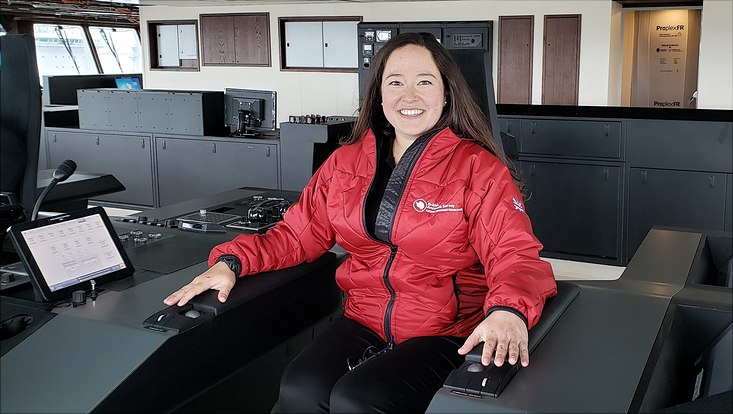Climate prediction, how is it working?
12 May 2022, by Iuliia Polkova

Photo: Iuliia Polkova
Climate prediction is the type of information about the future evolution of climate components such as the atmosphere, sea ice, ocean, and land. An example is air temperature for different locations on Earth in the various temporal resolutions, e.g., monthly, annual, etc. Climate predictions are produced with Earth System Models and utilize our best knowledge about the recent state of the Earth’s climate and radiative forcings such as greenhouse gas emissions, volcanic eruptions, and solar radiation.
My project deals with investigating optimal ways of introducing this best knowledge about the recent state of the climate into Earth System Models (ESMs). In short, it matters for the quality of climate predictions how exactly we introduce observations into ESMs. Wrongdoing may lead to the ESM quickly losing the information contained in the climate state that is used to start climate predictions. It is because the Earth’s components such as the atmosphere and ocean are closely linked by energy transfer and flux exchange. For instance, the atmosphere and the ocean communicate via winds and waves, evaporation and precipitation. These fluxes must be precisely coordinated in terms of location and time in the model. Otherwise flows can develop in simulations that do not exist in nature. Therefore, the development of methods for introducing climate observations into ESMs is very important and calls to map the initial states as naturally as possible to avoid such errors during climate predictions.
In general, to make a climate prediction, we need an ESM that can simulate reasonably well the current climate. Besides, we need observations as a starting point for the ocean, atmosphere, and sea ice model components as well as external drivers of the climate system such as changes in greenhouse gas concentrations, volcanic aerosols, solar radiation, etc. Additionally, we need methods to put all available observations from different observing systems onto the climate model grid cells. Due to sparsity, short record periods, and sometimes a lack of observations for certain regions, the gap has to be filled with model solutions through so-called data assimilation methods. In my project, I analyze advanced versus simpler data assimilation methods to test their impact on the quality of climate predictions.
I have been working on various building blocks of climate predictions from designing the experiments to co-creating a concrete climate service. The topic of climate predictions does not stop to fascinate me. There are already many useful climate services developed around the world but we by far have not reached the potential of climate prediction applications. I am thrilled to contribute to understanding how to improve and build trust in climate predictions such that they can be used for informed decision-making and planning in various sectors of economy and society.
About the author
Dr. Iuliia Polkova is a climate researcher with keen interest for making climate predictions useful for society.
Iuliia Polkova received a research grant from the German Research Foundation (DFG) starting in October 2020 for three years. The grant covers personnel, publications and travel expenses.


